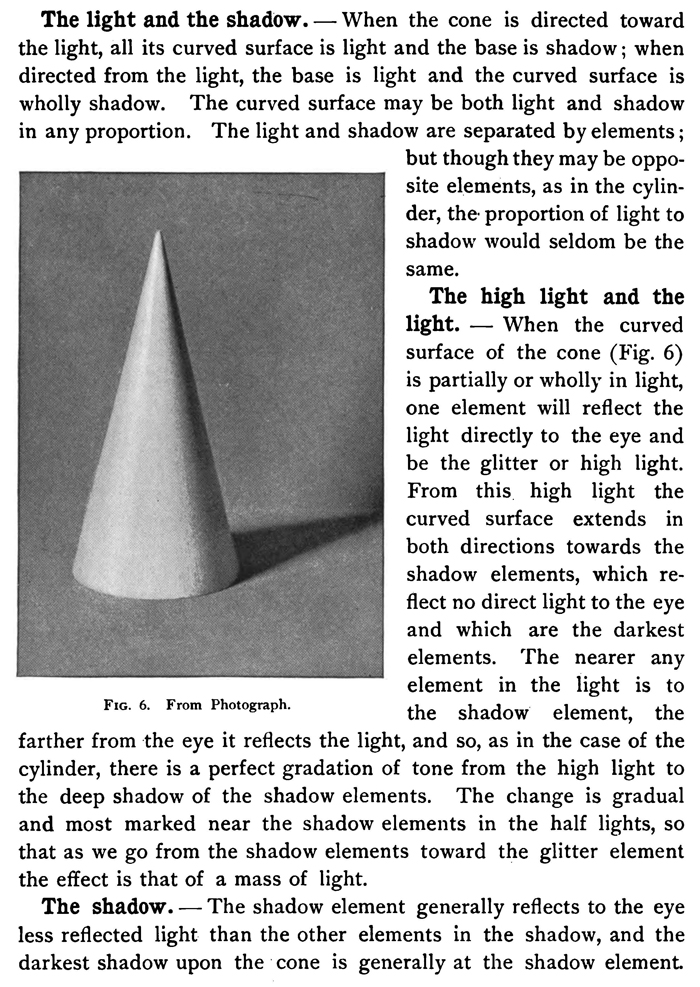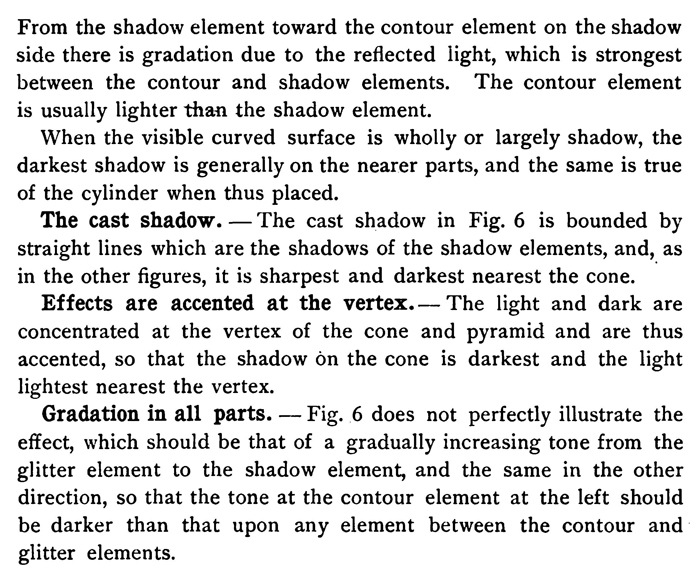Home >Directory of Drawing Lessons > Drawing Objects & Things > Geometric Shapes > Cones > How to Draw and Shade Cones
DRAWING & SHADING OF CONES : How to Draw Light and Shadows to Shade Cones
|
|
The above text is actually made up of images, so if you need to copy some of this text for an art assignment, please use the text below. Thank you. DRAWING AND SHADING CONESThe light and the shadow.When the cone is directed toward the light, all its curved surface is light and the base is shadow ; when directed from the light, the base is light and the curved surface is wholly shadow. The curved surface may be both light and shadow in any proportion. The light and shadow are separated by elements ; but though they may be opposite elements, as in the cylinder, the proportion of light to shadow would seldom be the same. The high light and the light.When the curved surface of the cone (Fig. 6) is partially or wholly in light, one element will reflect the light directly to the eye and be the glitter or high light. From this high light the curved surface extends in both directions towards the shadow elements, which reflect no direct light to the eye and which are the darkest elements. The nearer any element in the light is to farther from the eye it reflects the light, and so, as in the case of the cylinder, there is a perfect gradation of tone from the high light to the deep shadow of the shadow elements. The change is gradual and most marked near the shadow elements in the half lights, so that as we go from the shadow elements toward the glitter element the effect is that of a mass of light. The shadow.The shadow element generally reflects to the eye less reflected light than the other elements in the shadow, and the darkest shadow upon the cone is generally at the shadow element. From the shadow element toward the contour element on the shadow side there is gradation due to the reflected light, which is strongest between the contour and shadow elements. The contour element is usually lighter than the shadow element. When the visible curved surface is wholly or largely shadow, the darkest shadow is generally on the nearer parts, and the same is true of the cylinder when thus placed. The cast shadow.The cast shadow in Fig. 6 is bounded by straight lines which are the shadows of the shadow elements, and, as in the other figures, it is sharpest and darkest nearest the cone. Effects are accented at the vertex.The light and dark are concentrated at the vertex of the cone and pyramid and are thus accented, so that the shadow on the cone is darkest and the light lightest nearest the vertex. Gradation in all parts.Fig. 6 does not perfectly illustrate the effect, which should be that of a gradually increasing tone from the glitter element to the shadow element, and the same in the other direction, so that the tone at the contour element at the left should be darker than that upon any element between the contour and glitter elements. |
Privacy Policy ..... Contact Us






